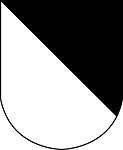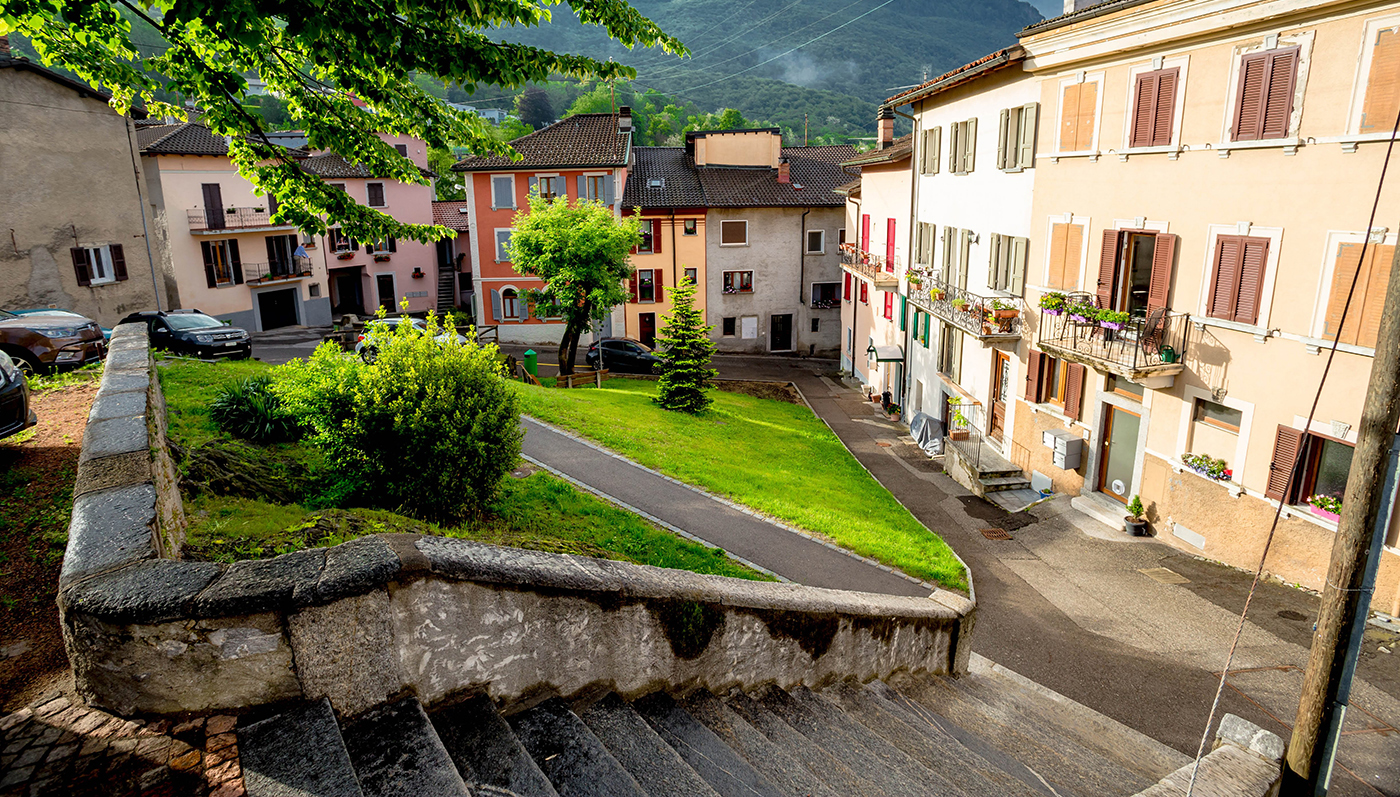History
While retaining the characteristics of a small village with an ancient charm, Villa Luganese, which joined Lugano in 2008, is today a residential district with tourist and hiking appeal, as it is located on the route to the San Lucio Pass. The main square of the historic core is home to the complex of the church of Santa Maria Assunta, featuring its interesting Renaissance portico.
The origins of Villa Luganese likely date back to the pre-Roman era; archaeological discoveries from 1870 indicate that the Sonvico area hosted populations before the Romans. At that time, the village thrived on agriculture, viticulture, and the exploitation of forest resources.
In La Castellanza di Sonvico, author Don Rovelli particularly highlights the discovery in the Rodenchem area of ancient tombs made of sarizzo slabs (a stone with reddish veins) containing vases and objects. One slab bears an inscription that Abbot Serafino Balestra identified as Etruscan. In subsequent years, other tombs were found with terracotta urns containing ashes and bone fragments. These findings suggest that the Etruscans, Celts, and later the Raetians lived in the region. Confirmation comes from archaeological discoveries, including a helmet and an inscription on a slab, in the territories of Cadro and Davesco.
Villa, later renamed Villa Luganese, was part of the Castellanza di Sonvico — along with Sonvico, Dino, Cadro, and Cimadera — under the rule of the Dukes of Milan until 1517. Until the 18th century, it was an important link between the Val Colla and Val Cavargna, as well as between the Sopraceneri region and Lombardy. It became a municipality only in the 1800s.
The coat of arms

The Armoriale dei Comuni ticinesi by Gastone Cambin, published in 1953 by the Istituto Araldico e Genealogico di Lugano, described the coat of arms of Villa Luganese as: "Per bend sinister, sable and argent." In one of the most significant and ancient heraldic texts, the Codice Cremosano of 1673, under the name "Villa", the description reads: "Per bend sinister, sable and argent, with a chief of the Empire." Given the widespread use of the name Villa, it was decided to adopt the coat of arms with a mark of cadency and without the chief.
Places of interest
The parish church of S. Maria Assunta, documented in 1473, dates back to the late medieval period. Between 1720 and 1730, vaults were constructed, transforming the interior into the Baroque style. The church was restored in 1943, while the exterior underwent restoration in 1976-77 under the direction of architects Mauro Buletti and Paolo Fumagalli.
The rectangular structure with an aligned choir is flanked on the south side by a Renaissance portico with five bays supported by columns, bordered to the west by the bell tower and to the east by a chapel (the former sacristy). The massive late medieval bell tower features two floors of biforas (the lower one bricked up); the top floor, dating from the early 20th century, has a hipped roof with four corner obelisks, rebuilt in 1976.
Numerous frescoes, some fragmentary, are preserved under the portico. In the eastern niche, there is one from the early 16th century depicting a martyr saint above whom two angels hover, holding a crown to protect the soul of a deceased person. The soul is about to be seized by a hook held by a nearly obliterated demon, chained by Saint Bernard of Clairvaux, flanked by Saints Roch, Lucy, Anthony Abbot (uncertain), and James the Greater.
In the lunette of the ancient portal, a Madonna from the early 16th century is visible, along with a Saint John the Baptist attributed to the Seregnesi, a Madonna of Mercy from the mid-14th century, and two medieval saints.
On the west side is a two-bay portico with a chapel niche adorned with a fresco of the Vision of Saint Bernard with the Crucifix, dated 1577. In the lunette of the main portal is a fresco of the Madonna with Child and the Infant Saint John, from the early 16th century.
Inside the church, the nave has a barrel vault, and the choir is covered by a domed vault with pendentives supported by Ionic pilasters and a cornice. The main marble altar, dated 1778, is the work of Giovanni Battista Adami. On the back wall of the choir, there is a canvas from the late 16th century depicting the Assumption with Saint John the Baptist and Saint Catherine of Alexandria kneeling, framed in a beautiful stucco frame with a radiant finish. The side walls feature paintings of the Presentation at the Temple and Saint Mary Magdalene Penitent, works by Luigi Ghelli from Pistoia, dated 1830. The two side altars, also dated 1778, contain paintings of the Madonna of the Rosary with Saints Dominic and Anthony of Padua, executed in Florence by Stefano Amigoli in 1779, and the Death of Saint Joseph from the 18th century.
The epigraphs
The portico of the parish church is adorned with numerous white marble plaques with inscriptions commemorating the work of artisans and professionals from Villa Luganese who, during the early 19th century, made their fortune, particularly in Tuscany, distinguishing themselves through their artistic and cultural contributions, as well as their social achievements and human qualities.
Located below the village on the main road, it is a rectangular vaulted room with a choir, documented since 1597. The choir, built in 1641, was later expanded with two side rooms, a vaulted ceiling, and a mosaic floor in 1865. The 1775 altar by Giovanni Battista Adami houses the detached fresco of the Madonna Enthroned with Child, dated 1544. In 1878, the roof and walls of the oratory underwent repairs.
In May, the Sunday Mass, which is usually celebrated in the parish church throughout the year, takes place at the oratory of Parlò.

The English version of this page was created with the aid of automatic translation tools and may contain errors and omissions.
The original version is the page in Italian.